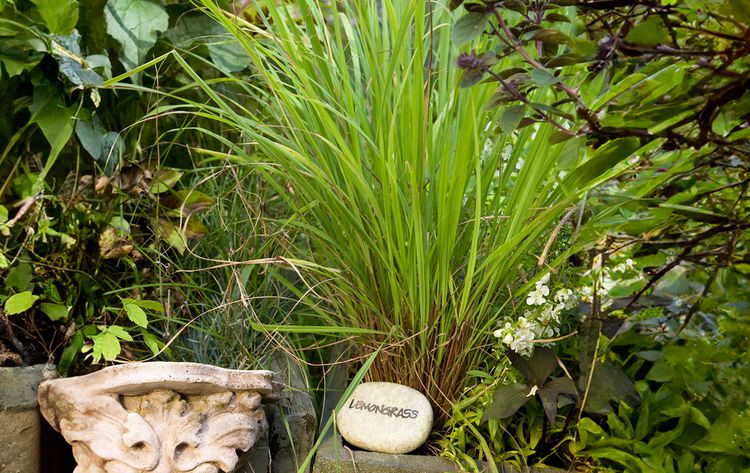When you know how to harvest lemongrass (Cymbopogon citratus) correctly, you'll have a fresh supply of this popular herb to enhance tea, soup, and other dishes with its citrusy fragrance and flavor. To help you get the most out of your plant, this guide explains when to harvest, which part of the plant to harvest, and the best technique for harvesting lemongrass. You'll also find ideas for using lemongrass and tips on propagating this herb to expand your harvest.
When to Harvest Lemongrass
Harvest lemongrass anytime during the growing season after the plant’s stalks reach ½ inch thick. The heat of summer concentrates lemongrass oils and increases the intensity of its flavor so if you can wait until the end of summer to harvest, you'll get a more flavorful harvest.
Lemongrass is too tender to survive cold weather, so unless you live in a warm climate (USDA Zone 8 or warmer) or want to overwinter this herb, you have one growing season to use the plant before the winter’s chilly temperatures arrive.
If you live in a frost-prone area, make sure to harvest lemongrass before the first fall frost arrives and kills the plant. Or transfer the plant to a pot to overwinter indoors. When warm temperatures return in spring, you can move the plant outside again and begin harvesting again once new stalks have reached the right thickness.
If you’re a warm climate gardener in frost-free areas, you can leave lemongrass outdoors for the winter. Then cut the plants back in the springtime to bring them back after their winter dormancy. Wait to harvest again until the new growth has had a chance to fill in.
How to Harvest Lemongrass
It’s best to harvest just a few lemongrass stems at a time from the outer edges of the clump. You can harvest a larger amount of stems and leaves before the plant goes dormant for the winter.
Use a knife or scissors to cut just below the lower, whitish portion of the stalk close to the ground. The lower part of the stem is the part that's most used for cooking. The plant will continue sending up new stalks from the roots through the growing season.
After cutting the stalk from the plant, peel away the tougher outer portion to reveal the tender white parts that will look a little like a green onion. Remove the green leaves too, and either compost them or use them for tea.
Before harvesting lemongrass, put on gardening gloves so you don’t cut your hands on the sharp edges of the leaves.
How to Use Lemongrass
Lemongrass is a popular plant for both the garden and kitchen because of its many uses. Here are some ways you can enjoy lemongrass:
- Flavor food: This herb is most known for the flavor it gives food. Add its leafy parts to tea. Slice up the white stem and add it to soup, stir fries, and sauces for a lemon flavor.
- Repel bugs: As a relative of the citronella plant, it has a reputation for repelling bugs, including mosquitoes.
- Liven up your garden: Plant lemongrass in a large pot on a sunny patio where you can enjoy the vibrant green foliage, strappy texture, and citrus-like scent up close.
- Propagate new plants: Grow a new plant by rooting its stems in a glass of water.
Propagating Lemongrass to Increase Your Harvest
If you'd like to expand your lemongrass harvest, you can propagate the herb in water with stems you buy at grocery stores.
- Purchase three lemongrass stems that still have their base.
- Remove a few leaves from each of the stems and put the stems in a glass of water.
- Refresh the water every few days and watch for small roots to form.
- Transfer the three stems into one pot filled with potting soil and put it near a sunny window until the leaves start to grow.
When the weather warms up, you can put the pot outside. However, you must bring the pot indoors before your area’s first frost because lemongrass can't withstand freezing temperatures.




















